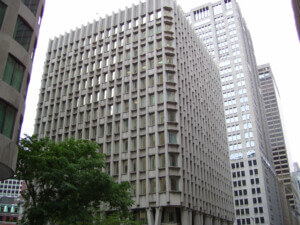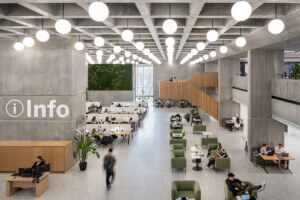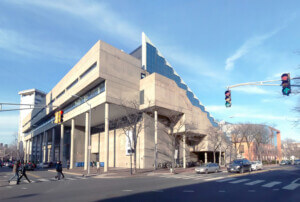The Institute for Town Planning and Architecture in Skopje, Macedonia has vanished in a fire on April 21, 2017. The Institute housed an archive of one of the largest post-earthquake reconstructions orchestrated after World War II. This urban reconstruction was led by Kenzo Tange with Arata Isozaki and involved scores of international architects and planners. They included Doxiadis, Van der Broek, Bakema, Polish architects, as well as domestic Yugoslav planners mainly coming from Croatia. The archive housed documents of the rebuilding: plans, memos, reports, booklets, books, and models. Many of them have been lost.
This fire has largely been reported in local media. Artists, architects, and the public created a series of postings on social media. It is not clear what the scale of the damage has been. The planning institute was housed in a construction barrack ever since the earthquake. It is not clear why the Institute did not move to a more permanent location. However, and under lesser known circumstances, a few years ago, the barrack that housed the Institute was foreclosed and became an occasional squat for homeless. The records on the internet, social media, and personal mail show books, stacks, and flat files covered in black ash. According to these records, the site is still left uncleared although this may have been changed.
Tange’s reconstruction plan was a response to the 1963 earthquake that leveled large parts of Skopje. As a rapid response, Yugoslav socialist leader Josip Broz Tito initiated a solidarity campaign to invite the world experts to lead the reconstruction. As the aid started to come into Skopje, including construction material, prefabricated homes, and machines, it was quickly dubbed as the “City of Solidarity.”
The United Nations ran a competition for the reconstruction. The First Prize went to Kenzo Tange whose team proposed a mixture of brutalist and Metabolist urbanism. Several revisions were made. As a result, other teams including Croatians, Dutch, Greeks, and Slovenians joined the planning and design efforts. Several masterpieces got built, including infrastructure, housing, and cultural projects. The brutalist aesthetic almost overnight became Macedonia’s new identity.
In 2010 Abitare magazine carried my article about heightening tensions in Skopje with photographs by Armin Linke. The tension between left and right wing politics focused on brutalist architecture as a key culprit in the conflict. The younger architects in Skopje were already preparing for the worst, while still organizing opposition to a nationalist re-branding of their city in clever ways. Unfortunately, the government proceeded with the plan called Skopje 2014. This ongoing plan involves about two dozen government buildings and hundreds of monuments in a kitsch neo-classical style. The reason goes deep into state identity politics and Macedonia’s disputed use of its own country name led by Greece. The center of the dispute is the claim that Alexander the Great is allegedly from Macedonia. According to Skopje 2014, Macedonia must assert its “true” national identity by building fake classical architecture. We predicted that “Skopje will disappear” because of this bold, nationalist pseudo-classical proposal to hide anything Tange did. The article can be found here. Later on, we moved to publish two books documenting socialist architecture in Yugoslavia. They included Skopje’s planning institute and records of Tange’s legacy within a larger context.
The planning institute we visited was indeed housed in a construction barrack. The dark wooden corridors displayed the architectural successes of Tange’s master plan via black and white photography. The conference room had a wooden model of the master plan displayed on the large table in the center. On the walls were original plans for zoning, traffic circulation, and all that usually fits into a master plan. Rolls of rolled paper were in plastic buckets designed in the 1960s. There were pencils next to the model. All was authentic, except for a cheerful: “Happy New 2009” colored paper arrangement on the front wall. I realized that I did not just enter the Institute for Planning and Architecture, but a memorial for the plan itself. The reconstruction of Skopje, an icon of a brutalist phoenix, was on display as a permanent exhibit.
This is not the first fire of brutalist architecture in Skopje. The last fire occurred in 2013 when a brutalist post-office, again designed by the Yale graduate, was partly damaged. Then we can mention the fire at Yale in 1968… or fires caused by the traumatic memory of loss in films by Andrei Tarkovski (Mirror) and by Wim Wenders (Paris Texas). Each house on fire is a testament of erasure or conflict rather than resolution. In Skopje, an ongoing clash between the left and the right makes anti-fascist and nationalist positions binaries in war. Thus the right in power labeled Tange’s urbanism as socialist and tried everything to hide it. This includes the plan called Skopje 2014. This plan, still ongoing, is a series of Las Vegas style pseudo-classical sculptures and government institutions built to hide socialism. Fingerpointing is relatively easy, but prone to manipulation.










